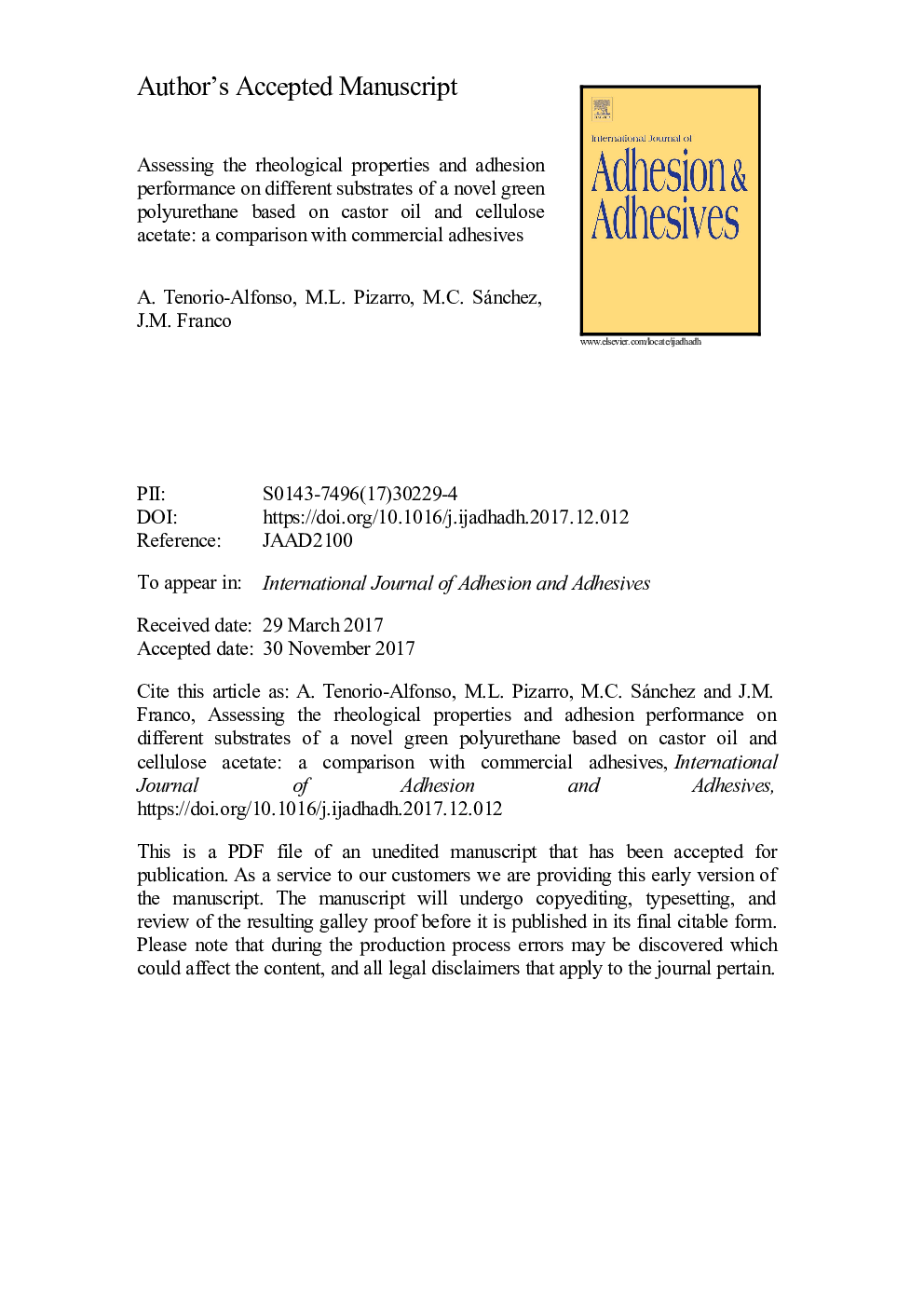| Article ID | Journal | Published Year | Pages | File Type |
|---|---|---|---|---|
| 7170960 | International Journal of Adhesion and Adhesives | 2018 | 20 Pages |
Abstract
Interest in replacing petroleum-based adhesives with more environmentally friendly materials has grown enormously in recent decades. In this work, a novel bio-sourced polyurethane was synthesized by functionalizing cellulose acetate with 1,6-hexametylene di-isocyanate (HMDI) and then blending the resulting biopolymer with castor oil in a 1:1 weight ratio to obtain a chemical oleogel which was left for curing. The rheological properties and adhesion performance of this new bio-based formulation were compared with those of commercially available adhesives by using small-amplitude oscillatory torsional tests and standardized mechanical tests to evaluate peeling (ASTM D903) and shear strengths, in both single-lap (ASTM D906, D1002, D3163) and lap-joint assemblies (ASTM D3164), on various substrates including wood, polyethylene and stainless steel, as well as flexural strength (ASTM D1184) on wood. As shown here, the new adhesive is suitable for most of the adherends examined, thus exhibiting mechanical strengths comparable to or even better than that of the benchmarks in wood-wood and steel-steel contacts, similarly good rheological response and significantly higher relative elasticity. On the other hand, the adhesion performance of the new adhesive on polyethylene was worse than that of the commercial adhesives.
Related Topics
Physical Sciences and Engineering
Engineering
Mechanical Engineering
Authors
A. Tenorio-Alfonso, M.L. Pizarro, M.C. Sánchez, J.M. Franco,
